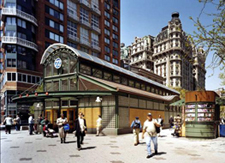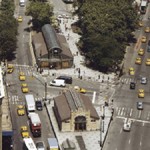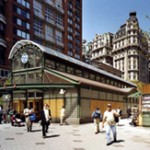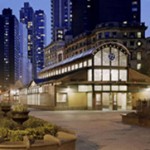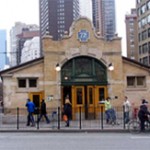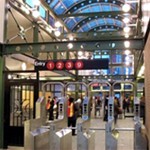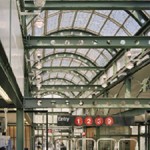The vibrancy of the neighborhood around 72nd Street requires that express trains stop at the 72nd Street Station. A weakness of the station was that even though it was constructed as an express station, no free transfer was possible from uptown to downtown. This was done because space in the control house was at a premium and NY City Transit was concerned about crowd control. The staircases were also quite narrow for an express station.
The subway station control house, which occupies its own island at 72nd Street and Broadway on Manhattan’s Upper West Side, is one of only three left in all of New York City. With its buff-colored brick and limestone quoins and stringcourses, this building is a silent reminder of the once glorious past of an underground system of transportation now largely taken for granted. The architectural team of Heins & Lafarge designed control houses such as this, as well as a number of spectacular stations, for the first portion of the subway system built around 1905.
The $5 Million renovation and new construction project provided a second control house on the north side of 72nd Street, additional stairways from the platforms, and a widened uptown platform at the north end. The widening required cutting into the sidewall of the tunnel and realigning the uptown local track.
The award winning new control house, designed by Gruzen Samton in collaboration with Richard Dattner, utilized the same brick, stone, metal (copper flashing) and glass as that of the existing control house, demanding the finest craftsmanship that only CitiStructure could offer.
Equally as demanding was the historic renovation of the existing landmark control building. Only approved cleaners and materials were permitted to be used for the cleanup of the old structure. The cleaning process was very labor intensive since clay had to be used for the restoration of the brick instead of acetone or sand and grout.
The work-site was tightly constrained, located on two triangle-shaped plots created by Broadway, Amsterdam Avenue and West 72nd Street in an extremely busy and populated neighborhood. The new control house was built and made operational so that the existing control house could be shut down and restored. This aspect of the project was built under a very tight schedule since the new control building could not be substantially started until the underground civil work was essentially complete.

